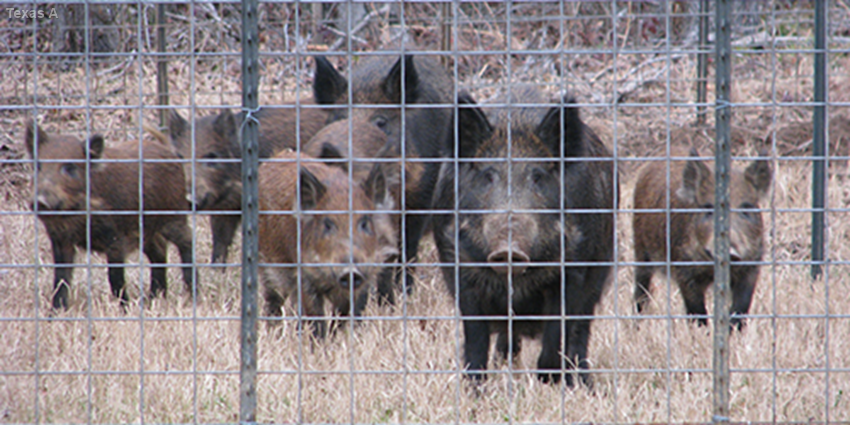Wild pigs are most vulnerable to trapping before food and forages become more available in the spring, according to Dr. Billy Higginbotham, Texas A&M AgriLife Extension Service wildlife specialist. He said most acorns have either been consumed or are rotting on the ground now, and wild pigs are searching for alternative food sources.
“This time period before spring greenup is prime for trapping wild pigs using best management practices,” Higginbotham said. “Wild pigs are searching hard for food during this period, which makes them more vulnerable to trapping.”
Higginbotham said it might take up to a month for the entire trapping process, which allows time for the pigs to be properly trained to take bait and get used to the presence of a trap. Other control activities, such as shooting and hunting with dogs, should be stopped during the trapping effort.
Landowners should start by baiting an area as close to the pigs’ daytime cover rather than the specific area damaged, Higginbotham said. They should determine how many wild pigs are in the sounder causing damage by establishing multiple bait sites and using game cameras to determine the number of pigs responding to bait.
“Many baits are available, but shelled corn is often used as long as the landowner does not mind some non-target use by species such as raccoons, squirrels and deer,” he said.
Higginbotham said he recommends the use of corral traps with a tire trigger on the ground.
“Tires work better than tripwires because it takes larger pigs to tip the tire enough to trip it,” he said. “And because larger pigs are always the last to enter a trap, you will have a better chance of catching the entire sounder.”
The tire should be placed in the bait area when baiting begins, he said. Place corn in the tire to encourage the pigs to move it enough to shake the corn out. But the trap should not be built until the pigs are routinely attracted to the baited area, he said.
Keep an opening where the gate will be pulled back to create a funnel at least 10 feet wide to encourage the pigs to enter the trap. Wider openings decrease the time needed to train the pigs that they can safely enter and feed in the back of the trap.
“Continue to bait trap the area and offer an increased amount of bait in the rear of the trap and a decreasing amount immediately outside and just inside of the trap,” Higginbotham said.
Once pigs are trained to enter the large opening routinely, tie the panels to the trap gate leaving the gate doors wired open. The pigs will now have to access the bait through the gate opening itself. Continue to offer a decreased amount of bait just outside the gate and increase the amount deeper into the trap.
“When pigs are routinely entering deep into the trap through the open gate, as evidenced by the game camera, the landowner can set the trap to catch late one evening,” he said. “Plan on being at the trap early the next morning to either dispatch them or trailer and transport the pigs to a buying station. But the fate of pigs should be determined before the trapping event.”
Higginbotham said a corral trap placed in a good baiting location can be used for years.
More resources are available at feralhogs.tamu.edu, wildlife.tamu.edu and Extension.org/feralhogs. Read the full AgriLife TODAY article for more information.

